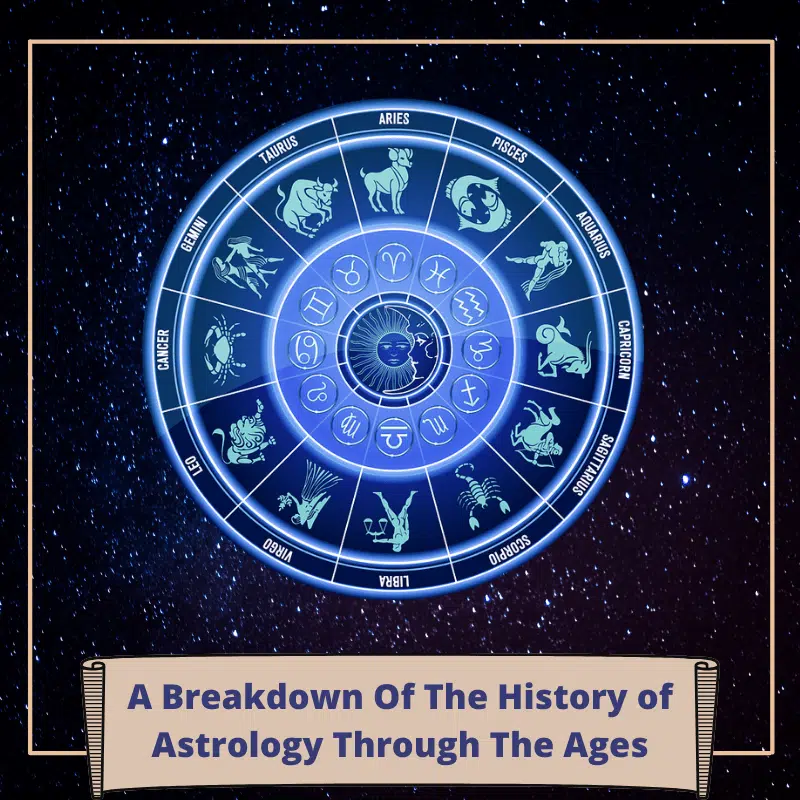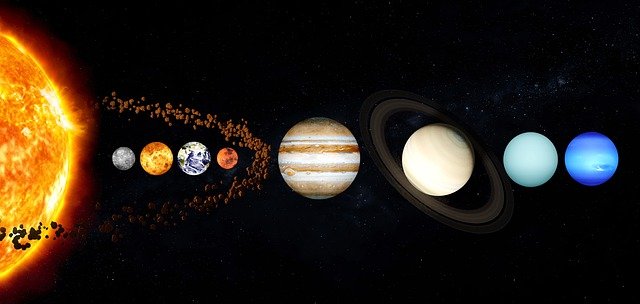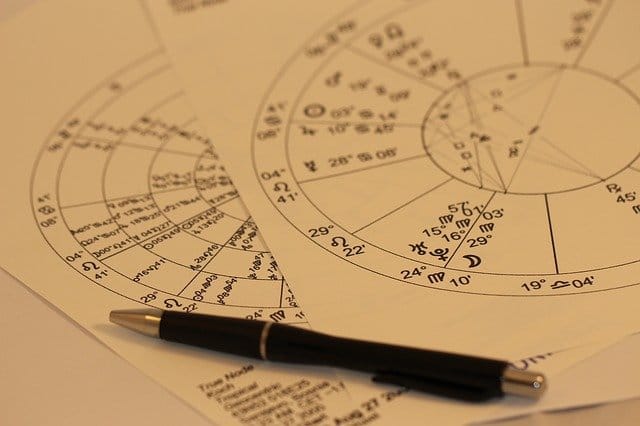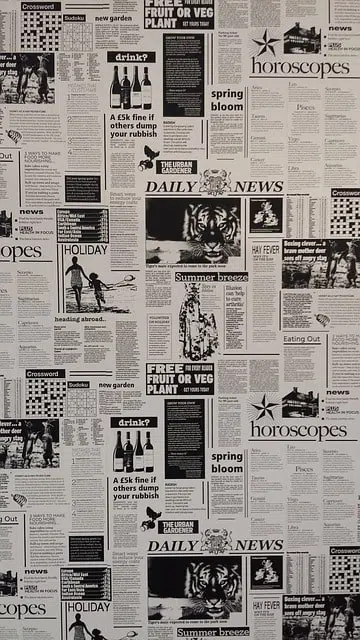
In the olden times, the history of astrology was more deterministic. People hunted, migrated, and planted with the stars. Living in rhythm and upkeeping with nature’s cycles helped civilizations survive.
For many centuries, astrology and astronomy were similar. Because humans were at the mercy of nature, they viewed the heavens with awe, fear, and even superstition.
The weather was the work of nature’s gods. Basically, a flood could wipe out the supply of food. Just as the right amount of rain could guarantee an inexhaustible and bountiful harvest. By tracking the stars, they could plan and predict specific patterns.
Moreover, modern astrology, like humanity, has progressed. Thus, learning the history of astrology is significant. Over the centuries, it developed expanded and enlarged consciousness. Scientific, mathematical, and technological advances have given us more sovereignty over our lives.
For that reason, astrology has become more of a tool for living. We no longer take a fear-based approach to it — well, we shouldn’t, anyway!
With that, this short article will cover most if not all that you need to know about the history of astrology. As we dive deeper into the history of astrology, you will be able to discover, learn and have your interest piqued on the following:
- Introduction: What Is Astrology?
- Nature and Significance of the History of Astrology
- Purposes of knowing the History of Astrology
- The Brief History of Astrology
- Origin of Astrology: Where did Astrology originate?
- Creation of Astrology: When was Astrology created, and when did it start?
- How old is Astrology?
- What is the history behind Astrology?
With that, let us get to it and find the answers yourself on how Astrology came into existence. And how you can unlock a greater spiritual connection to the universe.
Introduction: What Is Astrology?
Astrology is a form of divination involving human and earthly events. By interpreting and observing the stars, planets, the Sun, and the Moon.
Devotees believe that the impact of the stars and planets on earthly affairs allows them to predict destinies. The destinies of groups, individuals, and nations.
Astrology is also regarded as a science throughout its history. It is considered diametrically opposed to the findings and theories of modern Western science.
Additionally, astrology is a study of cycles. By observing the sequential movements of the planets, you can gain a greater understanding of the patterns in your own lives. It can sure be a powerful tool for healing and transformation.
Although it is not fortune-telling, astrology can be a highly effective predictive tool. When skillfully applied, on a personal level, it can give you insight into your personal issues, patterns, fears, and dreams.
Lastly, Astrology is a critical tool that can help you understand and unlock your highest potential. Showing you the ways how to live in harmony with the Universe.
Nature and Significance of the History of Astrology

Astrology is a means of predicting mundane events based upon the assumption of the celestial bodies. These heavenly bodies are considered in configurations and arbitrary combinations.
Historically, the Hellenistic philosophy is the theoretical basis for this assumption lies. It radically distinguishes astrology from the celestial omina (“omens”). It is first cataloged and categorized in ancient Mesopotamia.
Initially, astrologers presupposed a geocentric Universe. A Universe in which the “planets” (including the Moon and Sun) loop in orbits are at or near the centers of the Earth
Later Aristotelian physics principles were also supported and validated. According to this, there is an absolute partition between the circular and eternal motions of the heavenly element. And also the limited, linear motions of the four sublunar elements: fire, air, water, Earth.
Significance and Importance of Astral Omens in the History of Astrology
The view that the stars manifest the divine will is closest to the concept of celestial omens. Behind the ancient Mesopotamian collections. Their fundamental purpose was to inform the royal court of success or impending disaster.
These might take the forms of epidemic or meteorological phenomena. Affecting entire human, plant, or animal populations. Frequently, however, they involved the state’s military affairs or the personal lives and family of the ruler.
Celestial omina was also regarded as indicative and not as deterministic. As a symbolic language in which the gods communicated with men about the future. It was also believed that their unpleasant forebodings might be nullified or mitigated by contrary omens or ritual means.
The official bāru interpreted the celestial omina to counsel his royal employer of avoiding misfortunes. The omens provided a basis for intelligent action rather than an indication of an inexorable fate.
Purposes of Astrology

The original purpose of astrology is to inform you of the course of your life based on the zodiac signs and the positions of the planets. This is done by the moment of your conception or birth.
From this science (genethlialogy), the fundamental techniques of astrology were also developed. The main subdivisions of astrology developed after this are interrogatory, catarchic, and general.
Interrogatory astrology gives answers to queries based on the situation of the heavens at the moment of posing the questions. This consulting service is even more remote from determinism than catarchic astrology. It is closer to ritual purification and preparation of the astrologer.
Catarchic astrology is all about sources or beginnings. It determines whether a chosen moment is astrologically conducive to the success of a course of action. It allows you to act at astrologically favorable times thus, avoiding any failures predictable from its nativity.
General astrology considers the relationship of the celestial moments to humanity. It answers, by astrological questions formerly posed in Mesopotamia to the bāru.
Other forms of astrology, such as the application of astrology to medicine and the military, are variants on one or another of the above.
A Brief History of Astrology
Ancient astrology arose in the last couple of centuries BCE. Particularly around Egypt, in the Mediterranean region. Before the emergence of this new system, astrologers had read omens in the sky.
They have performed this for thousands of years, particularly in Mesopotamia. Despite that, around the 1st or 2nd century BCE, a melding of Babylonian, Egyptian, and Greek knowledge emerged. A new astrology using charts of the sky to interpret all manner of inquiries surfaced.
Astral Themes
The sky is the most mystifying part of our everyday involvement. Familiarity may make the unique events going on almost ordinary. Animals and plants grow and die, rain falls, rivers flow. We feel we understand that.
But the sky is beyond comprehension. Two significant objects travel through it: cold and changeable, hot and constant.
In the daytime, it’s moody; there may be blazing sun, racing clouds, or darkness followed by lightning and thunder. And on a crystal clear night, the sky is very opposite – predictable, if you look hard enough.
Human’s interest in the sky is at the heart of three stories: astronomy, astrology, and the calendar.
Astronomy is the scientific study of the moon, stars, and sun. It is a pseudo-science interpreting the impact of the celestial bodies on human existence. In the distant past, the two are closely linked. The sky is the home of many gods who influence life on earth. And the patterns in the atmosphere must indeed reflect that influence.
History of Astrology Timeline
Here is a rough timeline of this ancient practice, which has existed for nearly as long as humanity.
30,000-10,000 B.C.
The astrological roots began with the earliest civilization. Maps of the stars existed long before maps of the earth. Archaeologists have found cave paintings, mammoth tusks, and bones marked with lunar phases.
Man has long coped with uncertainty and the change brought on by nature’s cycles by tracking the stars—the seven visible planets were our first GPS.
6,000 B.C.
In Mesopotamia, the Sumerians note the movements of the stars and planets. The influences of an individual’s planets are also related to its general indications. As regarded by Mesopotamian texts as ominous. It is also considered as its presiding deity’s traits in Greek mythology.
But, on them are also a superimposed system of the four elements and qualities. Lists of sublunar substances, and Pythagorean opposites, too. Furthermore, the omens and the modes of the planetary motions are carefully considered.
Since the strengths are partly determined by their phases with respect to the Sun. They also exert a mutual influence both by occupying each other’s houses and by means of conjunction and aspects.
2,400-331 B.C.
The Chaldeans (also known as the Babylonians) continued what the Sumerians started. Inventing the first astrological system over thousands of years. They created the zodiac wheel that we use today (with planets and houses) around 700 B.C. The oldest known horoscope chart is also believed to date to 409 B.C.
In the early or 3rd century B.C., Babylonian diviners began. Its purpose is for predicting the course of an individual’s life. This is to utilize some planetary omens. Namely, latitudes, retrogressions, and positions relative to the horizon. Also, other parts of computed conception or at the moment of birth.
This method was still far of reach from astrology. But, its evolution was more or less parallel and contemporary with the development of the science of genethlialogy.
331 B.C.-5th Century A.D.

Alexander the Great conquered Babylon/Chaldea. The Greeks eventually started making advances in astrology. And developments in medicine, geometry, mathematics, and philosophy. The modern names for planets and zodiac signs come from Greek literature.
In 140 A.D., Ptolemy published Tetrabiblos, one of the most revered astrology works ever written. Tetrabiblos contains core techniques of astrology used to this day. This includes planets, zodiac signs, houses, and aspects (or angles).
The Greeks make outstanding advances in the fields of both astrology and astronomy. Their analytical approach to the heavens led to extraordinary brilliance in astronomy. Even though they blinded European astronomers for more than a millennium with a false Ptolemaic system.
Simultaneously, astrology benefits from the range and vitality of the Greek gods. These very human divinities are also linked with the planets and constellations. Making astrology dramatic and exciting.
And Greek interest in the individual extends the astrologers’ range. Evolved originally to help in state affairs, the art finds its lasting role in casting the fortunes of ordinary men and women.
5th Century A.D.
The Roman Empire falls. For 500 years, Western astrology disappears. And the Arabs continue studying and developing Greek Astrology.
Middle Ages
Astrology thrived and is an intrinsic part of the culture. Performed and practiced by astronomers, mathematicians, and doctors. Advances in mathematics helped astrologers develop more sophisticated and accurate charts.
At this time, many esteemed European universities, including Cambridge (1225-50), had astrology chairs. And royals had court astrologers. Many popes were pro-astrology. Monks and Placidus (1603-68) also created the house division system used by astrologers today.
Copernicus progressed the theory that the Earth travels around the Sun. He dedicated his main work to Pope Paul III’s astrologer. A decline in the belief in Astrology began as the church gained power. It was also viewed as superstition and heresy during the Inquisition.
Galileo was also found guilty of heresy and renounced his astrological beliefs to save his life!
17th-18th Century: “The Age of Reason”
In the mid-1500s, abetted Astrology’s decline, the Protestant reform movement started. Later, in Western Europe, rationalism became a consensus during the Age of Enlightenment (1650-1780). Cafes and salons emphasize reason, individualism, and analysis.
Science and skepticism were also seen as a way to reform society and to bring back balance and temperance. Astrology was also viewed as mere entertainment and not valid science. And most astrologers worked under pseudonyms.
19th Century
A renewed interest in spirituality in England invigorates astrology again in Europe. Psychologist Carl Jung (1875-1961) pioneers the use of astrology in analysis, and other developments in the field are also made.
20th-21st Century

In the year 1920s, magazines and newspapers started publishing the horoscopes that you still read today.
Since they only give 12 predictions for the entire world’s population, they appear more as entertainment.
Later in the century, computers make it fast and easy to cast charts. This replaced the need to do laborious charts by hand (though some stricter astrologers still prefer to do them that way).
The Relevance of Ancient Astrology Today
Astrology in Modern Times
In India, astrology is still popular, and its position is amongst the sciences. Even some Indian universities offer degrees in astrology.
However, in the West, Enlightenment rationalism and Newtonian physics eradicated belief in astrology. Even so, Western astrology is far from dead, as exemplified by the strong popular following it gained in the 1960s.
There were even attempts to re-establish a theoretical basis for it, although inconclusive results are found. The divisions of the year which are also derived from Hellenism as follows:
- Aries (Ram) March 21–April 19
- Taurus (Bull) April 20–May 20
- Gemini (Twins) May 21–June 21
- Cancer (Crab) June 22–July 22
- Leo (Lion) July 23–August 22
- Virgo (Virgin) August 23–September 22
- Libra (Balance) September 23–October 23
- Scorpio (Scorpion) October 24–November 21
- Sagittarius (Archer) November 22–December 21
- Capricorn (Goat) December 22–January 19
- Aquarius (Water Carrier) January 20–February 18
- Pisces (Fish) February 19–March 20
Many astrologers incorporate the planets discovered since Renaissance into the general astrological scheme. And find statistical relations between planetary positions and human lives. None of these attempts appears to be convincing to skeptics and other critics of astrology.
However, no profound explanation exists of the alleged influence of the planets, how they operate, and the nature of their effects. Despite these criticisms, astrology continues to attract people from all walks of life. From those who have their star charts drafted by professional astrologers. Or the casual followers who read their horoscopes in the daily newspaper.
Astrology in its historical and modern forms remains of great interest to scholars and a broad spectrum of the general public.
